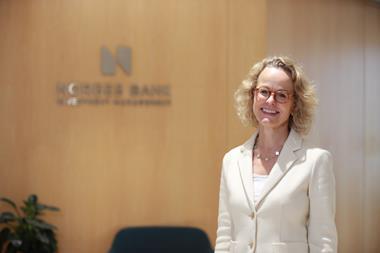The head of the UK’s Universities Superannuation Scheme (USS) said the latest report on its cost – which shows a £5.0bn (€5.7bn) surplus – allows “cautious optimism” regarding the upcoming triennial valuation.
USS is one of the country’s last defined benefit (DB) schemes still open for new contributions, with most of final-salary schemes having been forced to close over the years amid spiralling deficits not helped by persistently low interest rates.
Bill Galvin, USS’s group chief executive officer, wrote in an update of the funding position on Friday that USS had just published its latest Financial Management Plan (FMP) monitoring report.
The analysis gauges the likelihood that the assumptions made at the last valuation – on 31 March 2020 – will remain sufficient in current market circumstances, to the end of December 2022.
Galvin said that this time, USS had tried to expand the scope of the analysis to give a more forward-looking indication of potential valuation outcomes and benefit pricing as at 31 March 2023.
“And while the underpinning analysis is not sufficient to regard this as a prediction […] it does gives us grounds to look forward with cautious optimism,” said Galvin, who is stepping down this year as CEO after a decade in the role.
With a few weeks still to go before the new 31 March valuation, he said market movements since the end of December had been “more on the downside”, with growth in the prices of many assets and declines in yields.
“All else being equal, these movements can be expected to reduce future investment return expectations (and any surplus) and increase the required future service contribution rate,” he wrote, adding that there could be more ups and downs before the valuation date.
“Based on the end-of-December position and how market conditions have changed since, stakeholders might want to plan for the 2023 valuation on the basis that the overall contribution rate required for the current level of benefits is unlikely to be in excess of 20% of payroll,” he said.
“Similarly, they might also want to plan on the basis that the rate that would be required for the pre-1 April 2022 benefit structure going forward is unlikely to be in excess of the current cost of future service (25.2%),” Galvin said.
He said the latest FMP report suggested a technical provisions surplus could be emerging.
“But this will only become clear as we work through the various stages of the valuation and as the trustee’s assumptions and stakeholders’ preferences are confirmed,” he said.
Figures in the FMP report show the scheme with a £5.0bn technical provisions surplus on 31 December – a big contrast from the £14.1bn deficit at the 31 March 2020 valuation.
Galvin also said the USS trustee remained very keen for the pension fund to move towards providing a low-cost option for USS members.
This, he said, “might address the relatively high rate of opt-out from the scheme, particularly among lower paid members, and encourages the JNC [Joint Negotiating Committee] to move forward with its decision making in this important area”.
To read the digital edition of IPE’s latest magazine click here
























No comments yet